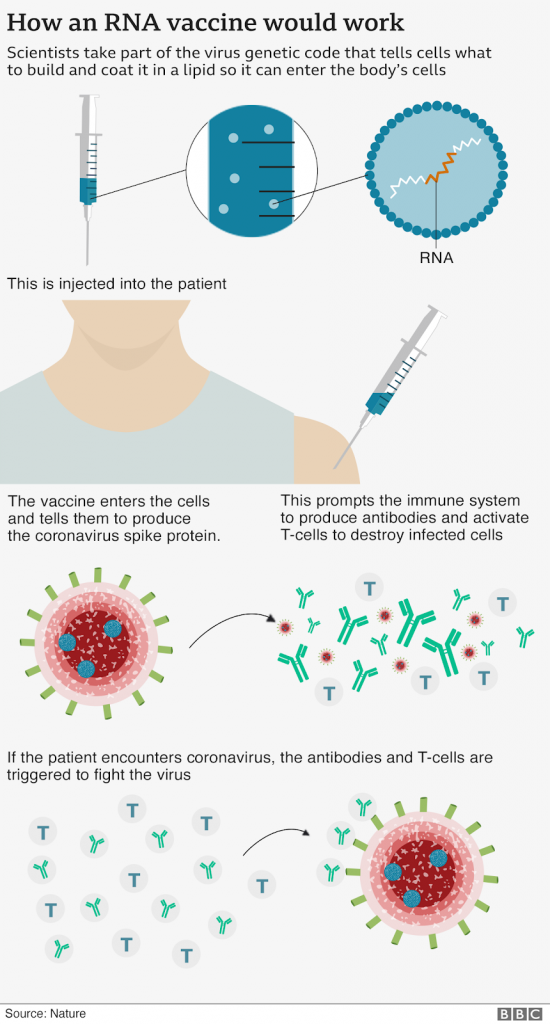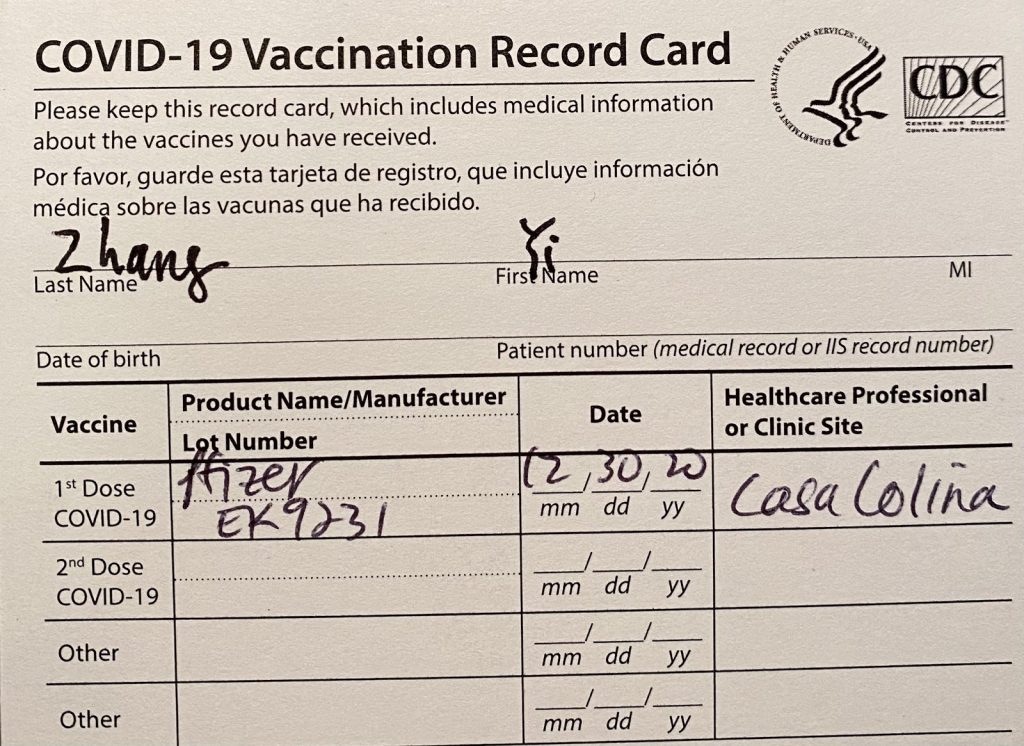Hello! This is Dr. Zhang, Medical Director of Haven Elite Urgent Care.
I hope you are doing well and staying healthy. With a harrowing surge of coronavirus cases in Southern California, I thought now would be a good time to write about the light at the end of the tunnel – vaccines.
In the past month or so, multiple people have approached me to ask about my thoughts on the coronavirus vaccine: was I getting it? Should they get it? Is it safe? My answers are yes, yes, and yes. In this blog, I will talk about why you should get the COVID-19 vaccine when it becomes available to you.
What’s in a Virus?
To quote biologists Jean and Peter Medawar, a virus is “simply a piece of bad news wrapped up in protein.” Basically, viruses are germs that invade our bodies and cause illness. They replicate by hijacking living cells and infecting them. Once infected, that cell begins to produce thousands of copies of the virus, which quickly spread throughout our bodies. How do these little hackers do it? Let’s look at the structure of a virus particle.
![]()
The most important part of the virus is its genetic material, which is like the virus’s blueprint. For the coronavirus to spread, it has to inject its genetic information into living cells, so that the cell is forced to replicate more and more of the virus. This DNA or RNA is protected by a cell membrane and a layer of proteins.
One protein on the coronavirus’s surface is called the Spike protein. This protein is also referred to as an antigen. An antigen is a molecule on the outside of a virus particle that triggers an immune response in the body. When our bodies see antigens, they start producing antibodies, or proteins in our immune systems that target foreign objects. When an antigen is spotted, antibodies recognize them and latch on until the viral molecule is destroyed.
How the COVID-19 Vaccines Work
So, how do the coronavirus vaccines work?
I just described how our immune system handles viruses; our bodies learn to recognize the outer pieces of the virus (the “antigens”). Then, the next time our antibody proteins spot a virus molecule, it recognizes the virus and attacks. Vaccines try to replicate the same process.
Essentially, vaccines introduce weaker versions of the virus to our bodies, which allows us to build immunity against the virus without actually contracting the illness. These weaker versions could be
- little pieces of the virus, as opposed to the whole virus
- a whole, inactivated virus
- the genetic instructions to make a fragment of the virus
We currently have two different vaccines being distributed: Pfizer’s and Moderna’s. Both of these vaccines are mRNA vaccines. This is the third option that I listed above. This vaccination method doesn’t actually inject our bodies with any coronavirus particles. Instead, it injects a little segment of RNA that codes for the Spike protein. The RNA gives instructions to our own cells on how to build the Spike protein – this way, our bodies can produce the antigen (Spike protein) without encountering the virus itself.
After our cells build their own Spike protein fragments, they present the fragments to the other immune system cells. Our immune system learns to recognize the Spike protein and destroy it with antibodies. So, if and when the coronavirus enters a vaccinated person’s body, that person’s cells will immediately recognize the Spike proteins covering the virus and will send antibodies and killer T-cells to fight the virus.

Note: mRNA vaccines are only one kind of vaccine. You may have heard of other companies, like Johnson & Johnson, still developing different types of COVID-19 vaccines. There are multiple approaches to developing a vaccine, and you can learn more about the different kinds here.
Are the Vaccines Safe?
“Give it to me straight, Doc,” you must be saying. “Is it safe?”
To put it simply: yes.
I know it may sound intimidating, with all the scientific jargon and phrases like “Operation Warp Speed”, but the COVID-19 vaccines have undergone strict and careful testing. Most of the concepts and technologies used in developing these vaccines are not new. The current SARS-CoV2/COVID-19 vaccine is actually based on research for the SARS-CoV vaccine in 2003 for the SARS outbreak. When SARS-CoV2 emerged, that vaccine data was brought out and research was continued. During the intervening 17 years, new genomic technology was developed in the form of mRNA vaccine to fight cancer. This is the technology being used in the Pfizer-BioNTech and Moderna COVID-19 vaccines. Furthermore, clinical trials were run with over 43,000 test subjects in Pfizer’s studies and over 30,000 test subjects in Moderna’s. Both vaccines were proven to be safe and nearly 95% effective.
If you want to read more about COVID-19 vaccine effectiveness and the studies, you can read this CDC article here.
After receiving the vaccine shots, you may experience some mild side effects, like a sore arm or mild flu-like symptoms, such as fever and headache. These are normal signs that your body is building immunity to the virus, and they should go away in a few days. Additionally, since January 9th, only 21 out of the 1.9 million people given the Pfizer vaccine had allergic reactions, and they had pre-existing conditions of anaphylaxis. Put it this way: the low chance of some mild side effects far outweighs the risk of getting sick, or even dying, from coronavirus.
Let’s Review:
In conclusion, the COVID-19 vaccine has been thoroughly tested, and it’s a safe and effective way to protect yourself from coronavirus. There are no microchips, no active coronavirus particles, and no toxic chemicals within the vaccine’s composition.
Its composition is simple: RNA + fatty acids. The RNA is harmless – made of the same nucleic acids developing proteins in your body right now. The fatty-acid coating is also harmless. It’s an oily bubble that protects the RNA, and it’s been used in pharmaceutical drugs for several years.
I hope this article cleared up any confusion you may have had about the Pfizer and Moderna vaccines, and I hope you will join me in getting vaccinated. With widespread vaccination, our daily lives can finally return to normal!

P.S. The first shot only gives you 50% immunity, so don’t forget your second dose!
Be well,
Dr. Yi Zhang